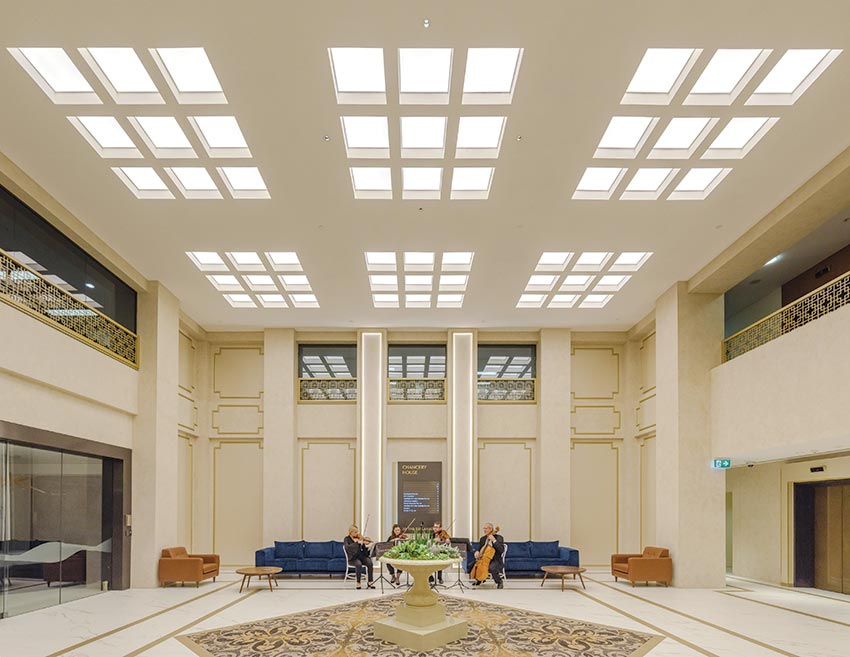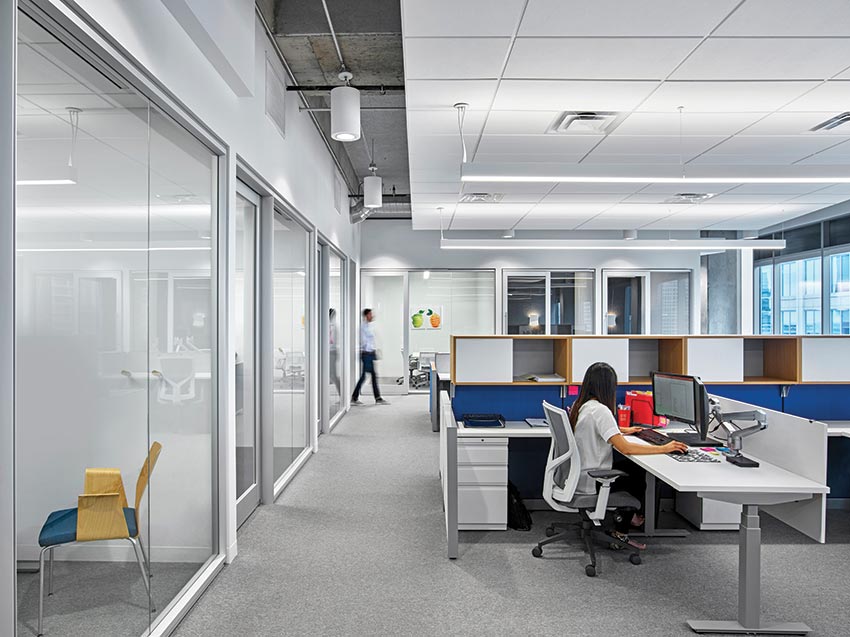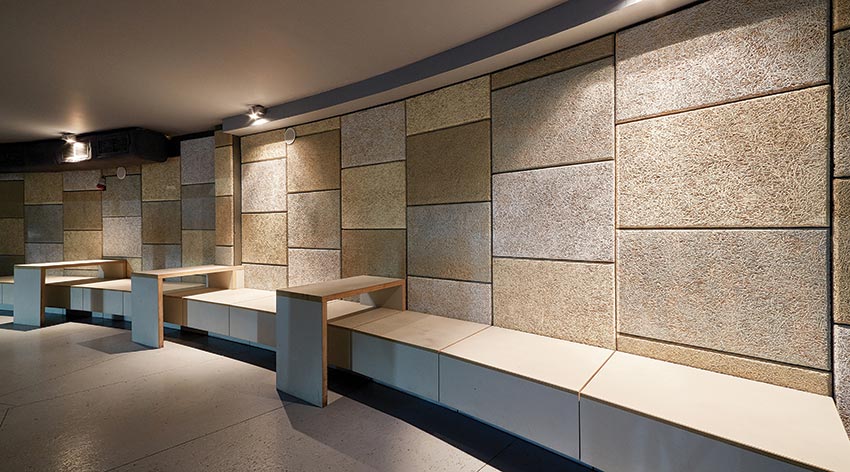Modern Acoustic Solutions for Interior Environments
Learning Objectives:
- Explain how excessive and uncontrolled sound and noise in indoor environments can negatively impact occupants and visitors.
- Describe how sound is generated, measured, and managed.
- List different types of acoustic solutions available that both manage sound and noise and offer aesthetic design options to improve the overall indoor experience.
- Discuss how high-performance acoustic walls, ceilings, and doors can contribute not only to sound and noise management but also to fire ratings, lighting, and indoor environmental health.
Credits:
This course is approved as a Structured Course
This course can be self-reported to the AANB, as per their CE Guidelines
Approved for structured learning
Approved for Core Learning
This course can be self-reported to the NLAA
Course may qualify for Learning Hours with NWTAA
Course eligible for OAA Learning Hours
This course is approved as a core course
This course can be self-reported for Learning Units to the Architectural Institute of British Columbia
At one time or another, we’ve all experienced an indoor environment where sound and noise weren’t properly managed, whether in a workplace, school, health-care facility, entertainment venue, or commercial space such as a restaurant or hotel. Whether the sound is too loud, too soft or muted, or too chaotic, the problems that poorly controlled sound and noise can cause for an indoor space are vast. Echoes, muffled sounds, lack of privacy—all of these can contribute to an unpleasant indoor experience, and in some cases the noise can impact the health, safety, and well-being of the building occupants. On the flip side, however, thoughtfully designed and specified acoustic solutions can make a world of difference: a carefully considered space designed to be acoustically appropriate can radically improve the indoor experience. But it can do more than just that.

Photo courtesy of USG
High-performance acoustic solutions can improve the sound, light, and comfort of an indoor space.
Sound, Noise, and the Indoor Environment
Sound is everywhere, and we hear sounds from many different sources throughout our daily lives. In its most basic sense, vibrating objects, which in turn cause a slight change in the air pressure, produce sound. These pressure changes travel in the form of sound waves through the air or other media, such as walls, floors, or ceilings, and are eventually detected by the listener’s ear and interpreted by his or her brain as information, or specific sounds. Sound is what we hear. Noise, on the other hand, is unwanted sound. And even relatively quiet noise can be distracting.
Noise in an indoor environment can cause any number of different problems depending on what the space is used for, who is using it, and how long the noise is present. Three common situations include excessively loud noises, prolonged exposure to loud noise, and uncontrolled noise. Each of these situations can impact people in negative ways.
Exposure to excessively loud noise, such as a blast or extremely loud music, can cause physical damage to the ear as well as psychological distress to the listener. Everyone is unique, and so the noise will impact people differently, but by and large, excessively loud noise tends to have negative health impacts. At the most extreme, exposure to high levels of noise can cause either a temporary change in hearing, temporary ringing in the ears (tinnitus), or, if combined with prolonged exposure, permanent tinnitus and/or permanent hearing loss. In addition to the physical impacts, excessively loud noise can be physically and psychologically stressful. This stress, in turn, can reduce a person’s workplace productivity, interfere with their ability to communicate and concentrate on the job, and can even impact their safety if the situation makes it difficult to hear warning signals.
Interior Sound- and Noise-Reduction System Attributes
Modern acoustic design solutions provide a range of noise- and sound-control options to suit just about any project. For example, some products focus on affordable, high-quality noise-reduction solutions that are easy for contractors to install, thus removing the need to hire and schedule specialist installers for specialty products. Other systems emphasize sustainable materials that help projects achieve green building credits, all while contributing to a healthier indoor environment. And yet others focus on flexibility, both for installation and practical day-to-day use. As an indoor feature, acoustic solutions also provide important fire protection, with certain products including this as a foundational element. Regardless of the product, most new acoustic solutions are designed either to be a thing of beauty in and of themselves or as a “blank slate” to allow designers to add the interior’s aesthetic in whatever way they desire, depending on the project goals.
Ceiling and Wall Systems

Photo courtesy of Rockfon
Modular acoustic ceilings can provide high sound-absorption performance and contemporary design in open offices where distractions would otherwise decrease productivity.

Photo courtesy of Acoustical Surfaces
Cementitious wood-fiber acoustic ceiling and wall panels are a high-performance and cost-effective option that can be designed to fit nearly any decor.
Notice

www.ambico.com

www.acousticalsurfaces.com/envirocoustic-woodwool

www.focalpointlights.com

www.nanawall.com/hsw

www.quietrock.com

www.pyrok.com

















